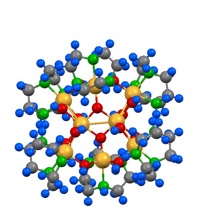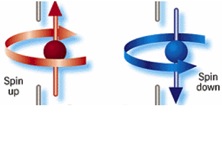The research team at the University of British Columbia (UBC) proved a theory for the prediction and control of environmental decoherence in a complex system (an important step on the way to quantum computing) while researchers performed experiments at the University of California Santa Barbara (UCSB) to prove the theory. Here’s an explanation of decoherence and its impact on quantum computing from the July 20, 2011 UBC news release,
Quantum mechanics states that matter can be in more than one physical state at the same time – like a coin simultaneously showing heads and tails. In small objects like electrons, physicists have had success in observing and controlling these simultaneous states, called “state superpositions.”
Larger, more complex physical systems appear to be in one consistent physical state because they interact and “entangle” with other objects in their environment. This entanglement makes these complex objects “decay” into a single state – a process called decoherence.
Quantum computing’s potential to be exponentially faster and more powerful than any conventional computer technology depends on switches that are capable of state superposition – that is, being in the “on” and “off” positions at the same time. Until now, all efforts to achieve such superposition with many molecules at once were blocked by decoherence.
The UBC research team, headed by Phil Stamp, developed a theory for predicting and controlling environmental decoherence in the Iron-8 molecule, which is considered a large complex system.
This next image represents one of two states of decoherence, i. e., the molecule ‘occupies’ only one of two superpositions, spin up or spin down,
Here’s how the team at the UCSB proved the theory experimentally,
In their study, Takahashi [Professor Susumu Takahashi is now at the University of Southern California {USC}] and his colleagues investigated single crystals of molecular magnets. Because of their purity, molecular magnets eliminate the extrinsic decoherence, allowing researchers to calculate intrinsic decoherence precisely.
“For the first time, we’ve been able to predict and control all the environmental decoherence mechanisms in a very complex system – in this case a large magnetic molecule,” said Phil Stamp, University of British Columbia professor of physics and astronomy and director of the Pacific Institute of Theoretical Physics.
Using crystalline molecular magnets allowed researchers to build qubits out of an immense quantity of quantum particles rather than a single quantum object – the way most proto-quantum computers are built at the moment.
I did try to find definitions for extrinsic and intrinsic decoherence unfortunately the best I could find is the one provided by USC (from the news item on Nanowerk),
Decoherence in qubit systems falls into two general categories. One is an intrinsic decoherence caused by constituents in the qubit system, and the other is an extrinsic decoherence caused by imperfections of the system – impurities and defects, for example.
I have a conceptual framework of sorts for a ‘qubit system’, I just don’t understand what they mean by ‘system’. I performed an internet search and virtually all of the references I found to intrinsic and extrinsic decoherence cite this news release or, in a few cases, papers written by physicists for other physicists. If anyone could help clarify this question for me, I would much appreciate it.
Leaving extrinsic and intrinsic systems aside, the July 20, 2011 news item on Science Daily provides a little more detail about the experiment,
In the experiment, the California researchers prepared a crystalline array of Iron-8 molecules in a quantum superposition, where the net magnetization of each molecule was simultaneously oriented up and down. The decay of this superposition by decoherence was then observed in time — and the decay was spectacularly slow, behaving exactly as the UBC researchers predicted.
“Magnetic molecules now suddenly appear to have serious potential as candidates for quantum computing hardware,” said Susumu Takahashi, assistant professor of chemistry and physics at the University of Southern California.
Congratulations to all of the researchers involved.
ETA July 22, 2011: I changed the title to correct the grammar.


Pingback: What is a diamond worth? « FrogHeart